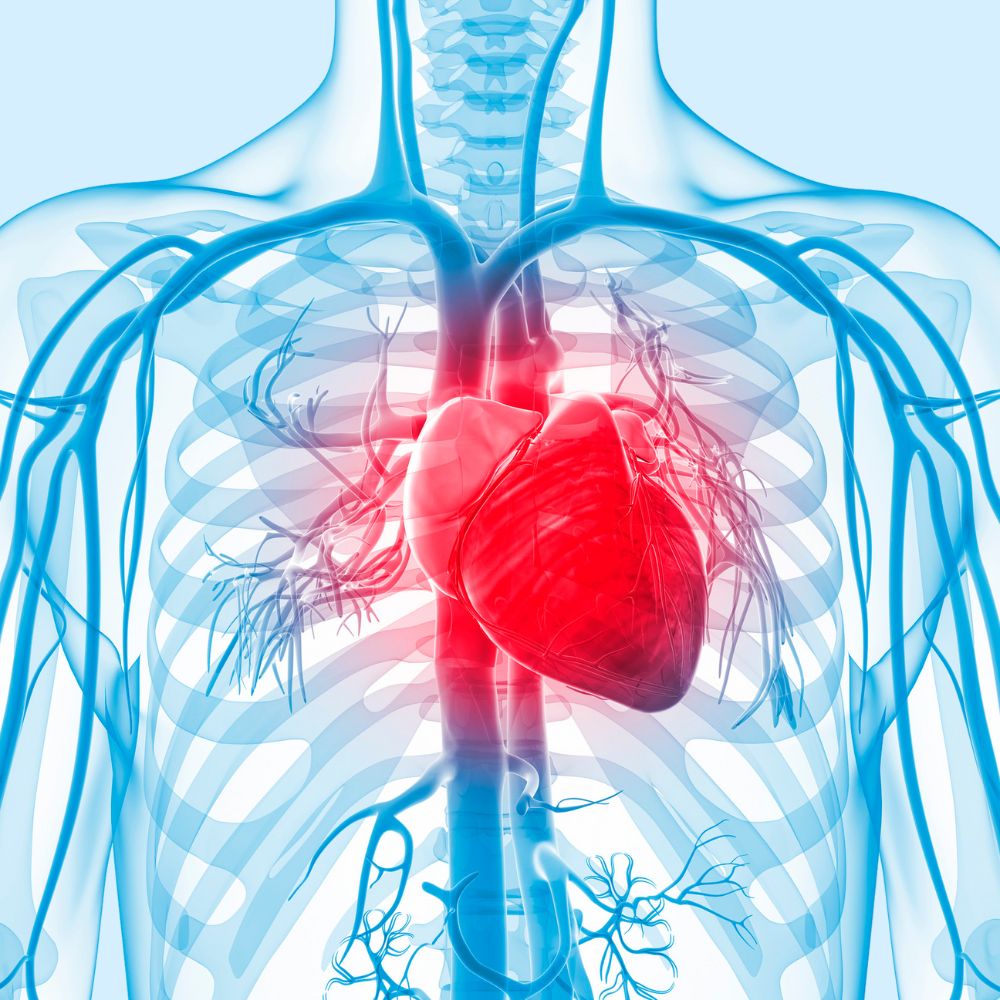Exploring the wider role of Cardiology in preventive health
Exploring the wider role of Cardiology in preventive health
Blog Article
Comprehending the Significance of Cardiology in Modern Health Care Solutions
Cardiology plays a vital function in contemporary health care, particularly as heart condition proceeds to be the leading source of death worldwide. Advances in diagnostics and therapy have transformed person treatment, enabling earlier interventions and boosted results. The shift in the direction of preventive cardiology encourages people to manage their health proactively. As innovation proceeds to evolve, the assimilation of ingenious services may additionally redefine cardiology's effect on public wellness, motivating a more detailed examination of arising fads and their implications.
The Frequency of Heart Disease and Its Influence On Public Wellness
Although cardiovascular disease stays the leading reason of death globally, its influence expands much past private people to influence public wellness systems and economic situations. The high prevalence of heart condition positions a substantial pressure on medical care resources, requiring increased financing for avoidance, treatment, and rehabilitation programs. Public health efforts have to deal with threat aspects such as obesity, smoking cigarettes, and sedentary way of lives, which add greatly to the rising occurrence of heart conditions.Moreover, the financial concern related to heart illness is enormous, including not only straight medical prices however likewise indirect expenses associated with lost productivity and early mortality. Neighborhoods encounter difficulties in managing these prices, frequently causing variations in medical care access and outcomes. As the population ages and lifestyle-related threats continue to rise, the urgency for effective cardiology treatments ends up being critical. Consequently, dealing with heart problem is not only an issue of private wellness however additionally an important public health top priority.
Advancements in Cardiac Diagnostics and Imaging Techniques
Current developments in heart diagnostics and imaging methods have reinvented the area of cardiology, enhancing the capacity to spot and keep an eye on heart illness. Techniques such as heart MRI, CT angiography, and echocardiography have become significantly sophisticated, offering thorough photos of cardiac structures and functions. These methods enable for the very early recognition of problems like coronary artery disease, cardiac arrest, and valvular disorders.Moreover, innovations in non-invasive diagnostics, such as wearable modern technology and remote monitoring tools, have equipped individuals and medical care carriers. These devices assist in real-time monitoring of heart rhythms and other necessary indicators, leading to timely interventions. Furthermore, expert system is being integrated into imaging evaluation, boosting accuracy and efficiency in diagnosis.
Innovations in Therapy Choices for Heart Conditions
Current advancements in cardiology have actually caused considerable developments in treatment alternatives for heart conditions. These include innovative medical techniques that boost step-by-step results and emerging medicines that provide brand-new avenues for treatment. As the field develops, these innovations play an important role in boosting patient care and outcomes.
Advanced Surgical Techniques
Technologies in surgical strategies have changed the landscape of cardiology, providing brand-new wish for clients with heart conditions. Minimally invasive procedures, such as catheter-based interventions, have greatly reduced healing times and health center keeps. Methods like robotic-assisted surgery boost accuracy, enabling cosmetic surgeons to navigate complicated anatomical structures with greater accuracy. Moreover, improvements in imaging modern technology help with real-time visualization during treatments, boosting results. Transcatheter aortic shutoff replacement (TAVR) exhibits a development in dealing with aortic stenosis, enabling shutoff replacement without open-heart surgical treatment. In addition, hybrid approaches that integrate catheter-based and surgical techniques supply tailored solutions for various cardiac concerns. These innovative medical methods not only boost individual safety and security yet likewise increase treatment choices, emphasizing the critical function of technology in modern-day cardiology practices.
Emerging Medicines and Treatments
As the landscape of cardiology remains to advance, emerging medications and therapies play a pivotal role in improving treatment options for heart disease. Advancements such as novel anticoagulants and advanced lipid-lowering agents have transformed the administration of heart diseases, substantially reducing client morbidity and mortality. Additionally, the advancement of gene treatments and regenerative medicine offers promising methods for treating conditions previously deemed incurable. Scientific trials are continually disclosing the efficiency of these treatments, pressing the boundaries of standard therapies. Furthermore, the integration of digital wellness technologies helps with customized medication, permitting tailored treatment strategies based on genetic and way of life factors. Jointly, these developments highlight the dynamic nature of cardiology, boosting person end results and redefining requirements of treatment in modern health care.
The Function of Preventive Cardiology in Client Care
Preventive cardiology plays an important function in patient care by concentrating on the identification of threat factors that contribute to heart condition. With lifestyle adjustment methods and early detection methods, doctor can efficiently reduce the incidence of cardiovascular events - Dr Garcia. This proactive method not just boosts patient end results yet also promotes long-lasting wellness
Risk Factor Recognition
While cardio diseases continue to be a leading cause of morbidity and mortality worldwide, efficient risk element recognition acts as a cornerstone of preventive cardiology. Determining risk elements such as hypertension, diabetic issues, hyperlipidemia, and family members background is important for very early intervention. Health care professionals utilize various evaluating methods to examine these variables, enabling customized preventive steps. Furthermore, recognizing a client's lifestyle selections, such as smoking and physical lack of exercise, further notifies threat evaluations. This complete analysis makes it possible for medical professionals to develop tailored care strategies intended anonymous at mitigating risks. By focusing on danger element identification, medical care systems can boost individual results and reduce the total worry of heart diseases, inevitably contributing to boosted public wellness methods and resource allowance.
Way Of Life Alteration Techniques
A wide range of studies highlights the essential function of way of living alteration methods in decreasing cardiovascular disease threat. These methods incorporate dietary adjustments, increased physical activity, navigate to these guys smoking cessation, and weight administration. By adopting a heart-healthy diet plan abundant in fruits, vegetables, whole grains, and lean proteins, people can reduce cholesterol levels and blood stress. Routine physical activity enhances the heart and boosts overall cardiovascular wellness. In addition, stopping smoking substantially lowers the danger of heart illness and improves recovery rates for those with current problems. Weight management better contributes to cardio health by minimizing other danger aspects such as diabetes mellitus and hypertension. Executing these way of life transforms not just promotes individual well-being however also functions as a keystone of precautionary cardiology in patient care.
Very Early Detection Methods
Way of living modifications greatly add to minimizing cardiovascular disease threats, yet they are most reliable when coupled with early detection methods. Preventative cardiology emphasizes the relevance of identifying possible heart issues prior to they rise right into serious problems. Methods such as blood pressure monitoring, cholesterol screening, and advanced imaging innovations like echocardiograms play crucial duties in evaluating cardio wellness. Biomarkers and genetic screening also enhance the accuracy of early discovery, permitting for tailored preventive techniques. Normal heart threat assessments empower healthcare carriers to interfere proactively, possibly preventing cardiovascular disease and strokes (Cardiology). By integrating these very early discovery methods into routine treatment, patients can benefit from timely way of living interventions and targeted therapies, inevitably improving end results and enhancing high quality of life
Integrating Technology Into Cardiology Practices
As improvements in modern technology continue to reshape numerous fields, the combination of cutting-edge devices and systems into cardiology practices has ended up being important for enhancing client care and outcomes. Telemedicine systems allow cardiologists to monitor patients from another location, enhancing access to care while decreasing the problem on health care centers. Wearable devices, such as smartwatches, allow continuous heart rate monitoring, informing both individuals and medical professionals to possible concerns in real-time. In addition, expert system (AI) is being utilized to evaluate large amounts of cardiac information, assisting in very early medical diagnosis and customized therapy plans. Advanced imaging strategies, consisting of 3D echocardiography, boost visualization of heart structures, resulting in much more specific treatments. Digital health and wellness records (EHRs) improve patient info administration, making certain that cardiologists have immediate accessibility to important data. Together, these technical improvements are changing cardiology, advertising positive management and enhanced health end results for patients with cardiovascular conditions.
The Importance of Patient Education And Learning and Involvement
Person education and engagement play an essential function in the monitoring of cardiovascular wellness. By equipping individuals with knowledge about their problems, therapy alternatives, and way of life modifications, doctor empower individuals to take an energetic function in their treatment. This aggressive strategy can cause improved adherence to suggested drugs, a knockout post nutritional adjustments, and exercise regimens, inevitably minimizing the danger of complications.Engagement also fosters a strong patient-provider relationship, encouraging open communication and trust fund. When individuals feel notified and entailed, they are most likely to voice problems and ask inquiries, which can bring about much better clinical results. Additionally, educational sources, such as workshops or electronic platforms, can enhance understanding and advertise self-management methods. In general, focusing on person education and engagement is crucial for boosting cardiovascular health, enhancing top quality of life, and decreasing healthcare prices linked with heart diseases.
Future Fads in Cardiology and Their Prospective Impact

Often Asked Concerns
What Way Of Living Adjustments Can Minimize Heart Problem Risk?
The current concern addresses lifestyle changes that can significantly decrease heart condition threat. Cardiology. Taking on a well balanced diet, involving in normal exercise, preserving a healthy and balanced weight, handling stress and anxiety, and staying clear of cigarette can significantly boost cardiovascular wellness
How Can I Recognize Very Early Indicators of Heart Problems?
Recognizing very early signs of heart problems involves monitoring signs and symptoms such as breast discomfort, lack of breath, exhaustion, and irregular heart beat. Timely understanding of these indicators can prompt required medical assessment and treatment for better outcomes.
What Are the Differences Between Cardiologists and Heart Surgeons?
The distinctions between cardiologists and heart surgeons hinge on their roles; cardiologists mostly take care of and diagnose heart disease through non-invasive methods, while cardiac cosmetic surgeons do operations to deal with architectural heart concerns. Each plays a vital, distinct role.

Just how Frequently Should I Obtain My Heart Health And Wellness Checked?
The regularity of heart medical examination varies based upon private danger factors. Typically, grownups should undergo assessments each to two years, while those with current conditions might require more constant assessments as encouraged by health care specialists.
What Function Does Genes Play in Heart Problem Danger?
Genes significantly affects cardiovascular disease threat, with familial patterns indicating inherited problems. Specific genetics can incline people to high blood pressure, cholesterol issues, and various other cardiovascular issues, highlighting the relevance of genetic testing in examining heart health and wellness. Heart disease continues to be the leading reason of fatality around the world, its impact expands far past private clients to influence public health systems and economic situations. Public wellness campaigns need to deal with danger variables such as obesity, smoking, and inactive lifestyles, which add significantly to the climbing occurrence of heart conditions.Moreover, the economic concern linked with heart condition is tremendous, including not just direct medical expenses but additionally indirect expenditures related to shed performance and premature mortality. Preventive cardiology plays an essential role in client care by concentrating on the recognition of danger elements that contribute to heart condition. Fabricated knowledge (AI) and equipment discovering are boosting diagnostics and individual surveillance, making it possible for very early discovery of heart diseases. The distinctions in between cardiologists and cardiac cosmetic surgeons lie in their duties; cardiologists largely handle and detect heart problems via non-invasive approaches, while cardiac specialists do surgical procedures to deal with structural heart concerns.
Report this page